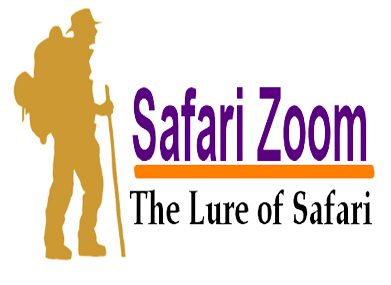Yellowstone National Park: The First National Park Created.
Yellowstone National Park stands as a testament to nature’s grandeur and humanity’s commitment to preservation. As the world’s first national park, it holds an unparalleled place in history, captivating millions of visitors with its diverse ecosystems, unique geothermal features, and breathtaking landscapes.
How Was Yellowstone Created and Why?
The Visionary Idea
Yellowstone’s creation stems from a revolutionary 19th-century idea: preserving land for the enjoyment of future generations. Before Yellowstone, no precedent existed for land conservation on such a grand scale.
The park was established on March 1, 1872, when President Ulysses S. Grant signed the Yellowstone National Park Protection Act into law. The aim was to protect the region’s geothermal wonders, wildlife, and landscapes from exploitation and development. Advocates like Ferdinand V. Hayden, who led the first scientific exploration of the area, played pivotal roles in convincing Congress of Yellowstone’s ecological and cultural value.
Why Yellowstone?
Yellowstone National Park is named after the Yellowstone River, which flows through the park. The name “Yellowstone” has its origins in the Hidatsa language, where the river was referred to as “Mi tse a-da-zi,” meaning “Rock Yellow River.” This name was later translated by French trappers to “Roche Jaune,” which means “Yellow Rock.”
The vivid yellow and pink colors of the sandstone cliffs along the river contributed to this naming. The river’s name was used by explorers, including Lewis and Clark, and eventually became widely accepted, leading to the designation of the national park itself as Yellowstone. Thus, the park’s name reflects both the geographical feature of the river and the historical context of its exploration and naming by Native Americans and early European trappers.
Yellowstone’s extraordinary features, from its geysers to its abundant wildlife, made it a prime candidate for protection. The park’s geothermal activity, concentrated in the Yellowstone Caldera, is unmatched anywhere else in the world. Additionally, its designation aimed to prevent private interests from monopolizing its beauty, ensuring that Yellowstone remained a treasure for all to enjoy.
Top 10 Unique Attractions in Yellowstone National Park
1. Old Faithful Geyser
Arguably the park’s most iconic feature, Old Faithful is a geyser known for its predictability. It erupts every 60-110 minutes, shooting water up to 180 feet into the air. Visitors can enjoy a close-up view from boardwalks or take in the spectacle from nearby observation points.
2. Grand Prismatic Spring
The Grand Prismatic Spring, the largest hot spring in the United States, mesmerizes with its vivid rainbow colors. The hues, ranging from deep blues to fiery reds, result from thermophilic bacteria thriving in the mineral-rich waters.
3. Yellowstone Lake
At an elevation of over 7,700 feet, Yellowstone Lake is North America’s largest high-altitude lake. Its serene beauty and the surrounding snow-capped mountains create a picture-perfect scene. Activities like kayaking, fishing, and wildlife watching make it a favorite spot for adventurers.
4. Lamar Valley
Often referred to as the Serengeti of North America, Lamar Valley is a haven for wildlife enthusiasts. This area offers opportunities to spot wolves, bison, elk, and grizzly bears in their natural habitats.
5. Mammoth Hot Springs
The terraced formations of Mammoth Hot Springs are a geological wonder. The hot springs create travertine terraces that cascade down the hillside, offering a unique spectacle of colors and shapes.
6. Yellowstone’s Waterfalls
The Lower Falls of the Yellowstone River, at 308 feet high, is a must-see. Its powerful cascade into the Grand Canyon of the Yellowstone creates an unforgettable sight. Other notable waterfalls include the Upper Falls and Tower Fall.
7. Hayden Valley
A paradise for bird watchers and wildlife lovers, Hayden Valley is home to species like bison, bald eagles, and trumpeter swans. The valley’s open landscape also offers excellent photo opportunities.
8. Norris Geyser Basin
The Norris Geyser Basin is the park’s hottest and oldest geothermal area. Its highlight is the Steamboat Geyser, the tallest active geyser in the world, capable of reaching heights of over 300 feet during eruptions.
9. West Thumb Geyser Basin
Located along the shores of Yellowstone Lake, the West Thumb Geyser Basin offers unique features such as geysers and hot springs within the lake itself. The contrast between the steaming geothermal activity and the cool waters of the lake is awe-inspiring.
10. Wildlife Diversity
Yellowstone boasts one of the most diverse ecosystems in the world. From black bears and mountain lions to bighorn sheep and otters, the park is a sanctuary for over 60 mammal species and countless birds, reptiles, and amphibians.
Conclusion
Yellowstone National Park remains a crown jewel in the world of conservation, offering visitors an unmatched blend of natural beauty, geothermal wonders, and thriving ecosystems. Its establishment as the first national park set a global precedent for protecting natural landscapes for generations to come.
FAQs
Q: What is Yellowstone National Park best known for?
A: Yellowstone is famous for its geothermal features like Old Faithful, stunning landscapes, and diverse wildlife.
Q: Can I see wildlife in Yellowstone?
A: Absolutely! Yellowstone is home to species such as bison, wolves, bears, and elk, often spotted in valleys like Lamar and Hayden.
Q: When is the best time to visit Yellowstone?
A: Summer (June to August) is the most popular time, but spring and fall offer fewer crowds and excellent wildlife viewing opportunities. Winter provides a magical, snow-covered experience.
Q: Are there guided tours available?
A: Yes, the park offers ranger-led programs, and several private companies provide guided tours tailored to different interests.
Q: Is Yellowstone suitable for families with children?
A: Absolutely! The park offers family-friendly activities, such as easy hiking trails, educational programs, and visitor centers.
Q: What precautions should I take while visiting?
A: Always stay on marked trails, keep a safe distance from wildlife, and follow park regulations to ensure your safety and that of the environment
Q: Are there accommodations inside the park?
A: Yes, Yellowstone has a variety of lodges, cabins, and campgrounds, but reservations are highly recommended, especially during peak season.
Q: What makes Yellowstone unique?
A: Its combination of geothermal features, pristine landscapes, and abundant wildlife sets it apart from other parks worldwide.
Q: How do I get to Yellowstone National Park?
A: The park is accessible via five entrances, with the West Entrance near West Yellowstone, Montana, being the most popular.




